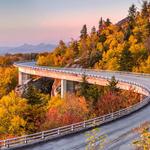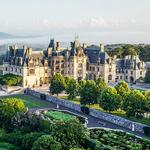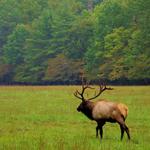Things To Do

Experience the Scenic Blue Ridge Parkway
Coined America’s favorite drive, there is plenty to do/see here for everyone: from those who are just looking for a view to those seeking hiking trails and adventure. By early October the leaves at higher elevations should be beginning to transition to their beautiful autumn hues! Recommended Trails: CRAGGY GARDENS PINNACLE Milepost 364.1. Hike round trip distance: 1.2 miles https://www.exploreasheville.com/stories/post/craggy-pinnacle-trail/ MOUNTAINS-TO-SEA TRAIL at CRAVEN GAP Milepost 377.4. Hike round trip distance: 4.8 miles https://www.exploreasheville.com/stories/post/mountains-to-sea-trail-at-craven-gap/ MOUNT PISGAH Milepost 407.6. Hike round trip distance: 2.6 miles https://www.exploreasheville.com/stories/post/the-best-blue-ridge-parkway-hikes-in-asheville-nc/ WATERROCK KNOB (highest point on the parkway) Milepost 451.2 Hike round trip distance: 1.2 miles https://www.nps.gov/blri/planyourvisit/waterrock-knob-mp-451-2.htm

Biltmore Estate
George Vanderbilt's luxury retreat, built in the 1890s, is America's Largest Home and a top attraction in Asheville. This French Renaissance castle in the heart of Asheville and the Blue Ridge Mountains is an architectural jewel. The home features 250 rooms, including 35 bedrooms, 43 bathrooms and 65 fireplaces. In addition to the house, the 8,000-acre estate is home to forested trails and beautiful gardens, which include one of the country’s most complete collections of azaleas. Biltmore is also where you’ll find the nation’s most-visited winery. As you explore the estate, enjoy shopping, dining and luxury accommodations. Biltmore Estate tickets cost $60-85, depending on the time of year and the day of the week. Purchase Biltmore tickets online at least 7 days in advance or purchase them at the Asheville Visitor Center for a $10 discount.

Elk Watching in Cataloochee Valley
Elk were once abundant throughout the United States, but by the mid-1800’s, over-hunting and habitat loss wiped out eastern elk herds. In 2001, the Rocky Mountain Elk Foundation, the National Park Service and other partners joined together to restore wild elk to the Smoky Mountains in the Cataloochee Valley near Maggie Valley. The initial 52 elk that were released have grown to a herd of almost 200. The elk’s fall breeding season is known as the rut (mid September through the end of October). The mating call of bulls is called a bugle and can be heard during the breeding season. Even if the elk are not present, people are not allowed to walk into the fields. See website for directions.

Check out the Beer Scene
With more breweries per capita than anywhere else in the U.S., Asheville was first named Beer City USA in 2009 and has swept the competition almost every year since. From hoppy IPAs to dark stouts, the city’s breweries keep beer flowing like mountain water. Track down the city’s best pints and pours with this guide to a full day of brews with a view.

Max Patch
Max Patch is a bald mountain on the North Carolina-Tennessee Border in Madison County, North Carolina, and Cocke County, Tennessee. It is a major landmark along the Tennessee/North Carolina section of the Appalachian Trail, with its summit located in North Carolina. It is known for its 360-degree views of the surrounding mountains, namely the Bald Mountains in the immediate vicinity; the Unakas to the north; the Great Smoky Mountains National Park to the south; and the Great Balsams and Black Mountains to the southeast. A small parking area is located near the summit with a short loop trail. One of the most beautiful views you will find in NC (or anywhere). We recommend timing your visit with sunset (or sunrise, if mornings are your thing)!

River Arts District
Over the last decade, Asheville has emerged as a progressive haven of arts and culture in the middle of North Carolina’s Blue Ridge Mountains. The town is known for its fiercely independent spirit, with myriad “green” restaurants, brewpubs, and countless Asheville art galleries and artists’ studios popping up over time. https://blueridgemountainstravelguide.com/asheville-river-arts-district-galleries-restaurants/
